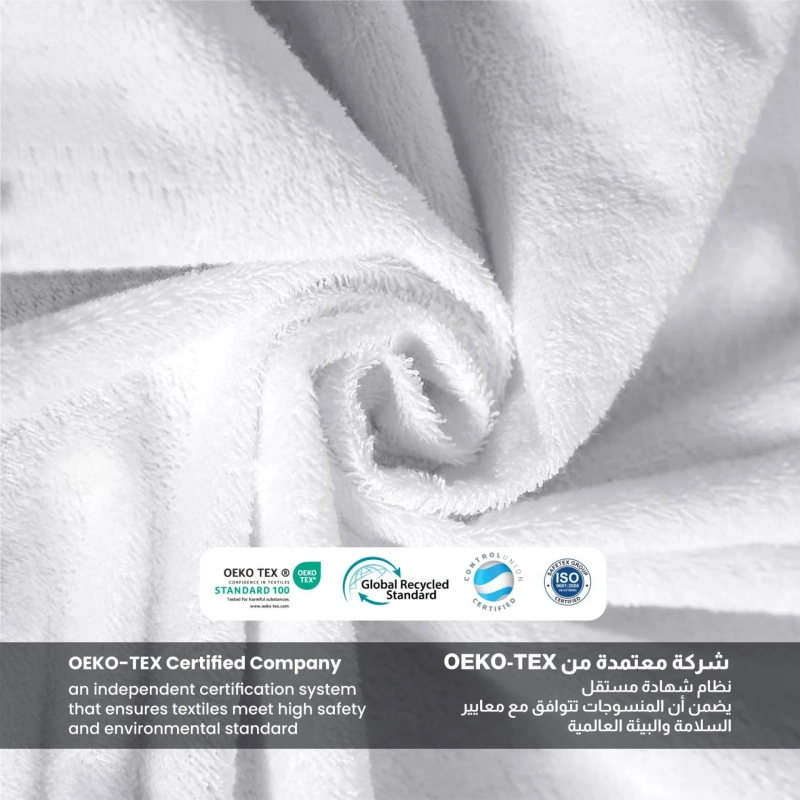A mattress is one of the most important investments you make for your home. It directly impacts your comfort, quality of sleep, and even your health. Naturally, you want it to last as long as possible — and that’s where mattress protectors come in. They shield your mattress from wear, spills, allergens, and more. But when you start shopping, you’ll notice a big choice to make: waterproof vs. non-waterproof mattress protectors.
Each has its own advantages, and the right one for you depends on your lifestyle, preferences, and needs. Let’s break it down so you can choose with confidence.

1. Understanding Mattress Protectors
A mattress protector is a removable layer of fabric placed over your mattress, typically underneath the bedsheet. It’s designed to provide a barrier against dust, allergens, sweat, and stains. Some are waterproof, offering full spill protection, while others focus on breathability and comfort without the waterproof layer.
2. Waterproof Mattress Protectors
What They Are:
Waterproof mattress protectors include a special layer — often made from polyurethane or a similar material — that blocks any liquid from penetrating the fabric and reaching the mattress.
Pros:
- Protection from spills and stains: Ideal for homes with kids, pets, or if you enjoy eating or drinking in bed.
- Guards against sweat: Prevents long-term moisture damage, mold, or unpleasant odors.
- Allergen barrier: Many waterproof protectors also block dust mites and allergens.
Cons:
- Breathability concerns: Some waterproof layers can trap heat if not designed with breathable fabrics.
- Slight crinkle sound: Lower-quality waterproof protectors may produce a faint rustling noise when you move.
Best For:
- Families with young children.
- Pet owners.
- People prone to spills or night sweats.
- Those with allergies or asthma.
3. Non-Waterproof Mattress Protectors
What They Are:
Non-waterproof mattress protectors are made from breathable fabrics like cotton, bamboo, or polyester blends. They offer a protective layer but do not block liquids entirely.
Pros:
- Superior breathability: Better air circulation, helping regulate body temperature during sleep.
- Soft, natural feel: Often more comfortable and closer to the feel of a regular bedsheet.
- Quiet: No crinkling or noise when you move.
Cons:
- Limited spill protection: They may absorb moisture but won’t prevent it from soaking into the mattress.
- Not suitable for all situations: Not ideal for young kids, pets, or those prone to accidents.
Best For:
- Adults without frequent spills or accidents.
- People prioritizing maximum airflow for cooler sleep.
- Those seeking a more natural, fabric-only sleep surface.
4. Key Factors to Consider When Choosing
When deciding between waterproof and non-waterproof mattress protectors, think about:
1. Lifestyle & Household Needs
- Do you have kids or pets? Waterproof is almost always the safer bet.
- Do you rarely spill anything in bed? A non-waterproof protector may be all you need.
2. Comfort Preference
- Prefer a cooler, softer feel? Go for non-waterproof or a high-quality breathable waterproof option.
- Want total protection? Waterproof is essential.
3. Mattress Warranty
Some mattress warranties require using a protector to keep coverage valid. A waterproof protector offers extra assurance against damage.
4. Health Considerations
For those with allergies or asthma, a protector with dust mite and allergen resistance is recommended — many waterproof versions offer this feature.
5. Finding the Best of Both Worlds
If you can’t decide, know that modern waterproof mattress protectors have come a long way. High-quality designs combine a thin waterproof membrane with soft, breathable fabrics like cotton or bamboo, offering both spill protection and comfort.
This way, you can protect your mattress from moisture without sacrificing the soft, quiet feel you love.
6. Care & Maintenance Tips
Whether you choose waterproof or non-waterproof, proper care ensures your mattress protector lasts:
- Wash regularly: Every 1–2 months, or sooner if spills occur.
- Follow care instructions: Some waterproof layers should be washed in cold water and air-dried to maintain their protective qualities.
- Rotate: Rotating the protector occasionally helps maintain even wear.
Final Thoughts
Choosing between a waterproof and non-waterproof mattress protector boils down to your lifestyle, comfort needs, and protection priorities.
- If you value maximum protection against spills, moisture, and allergens, go with a waterproof option.
- If you prefer breathability and a softer, more natural feel, a non-waterproof protector might be your best fit.
Whichever you choose, investing in a high-quality mattress protector will extend your mattress’s life, keep it clean, and help you enjoy a healthier, more comfortable night’s sleep.


